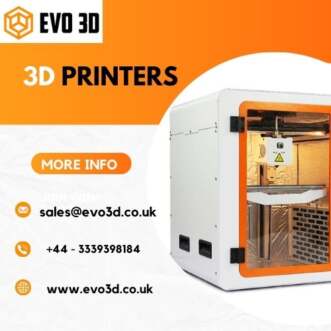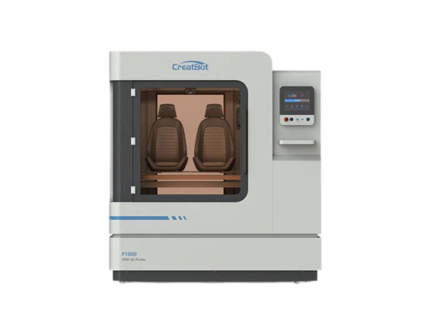Designing and production technology have been pushed to their limits in the world of 3D printing. Although there have been a lot of small desktop printers, industrial 3D printers are now in great demand. This breed of machine is capable of large-format FDM that is particularly different from ordinary printers.
What are Industrial Big 3D printers?
Industrial big 3D printers, also known as large format 3D printers, are used to produce objects much larger than any other desktop printer can make. These machines have a build volume ranging from a cubic meter up to four meters or more at times for some models. They are targeted at industries that require massive parts and prototypes.

Large Format FDM: The Powerhouse Technology
Fused Deposition Modeling (FDM) is a famous type of three-dimensional printing where melted plastic passes through a hot nozzle fed with a filament spool, hence building the model layer by layer. These kinds of printers use an elevated form of this technique, which transforms this type into something completely new altogether. They employ thicker filaments, such as 1.75mm or even 2.85 mm, and stronger printing mechanisms to handle the requirements of manufacturing large components.
Advantages of Industrial Big 3D Printers
● Large-Scale Production: The ability to print items beyond the standard manufacturing limits will open up wider applications in industries such as automotive, aerospace, and construction. Think of printing entire car parts, large-scale arch models, or furniture.
● Rapid Prototyping: Large-format FDM printers allow for the quick and efficient production of working prototypes without worrying about the cost and time involved with traditional methods. This enables a faster design iteration process and product development cycles.

● Cost-Effectiveness: Sometimes, industrial big 3D printers can be more cost-effective than traditional manufacturing routes, especially in cases with low-run productions or complex geometries.
● Material Versatility: Several large-format FDM printers utilize various materials, including ABS and PC (engineering thermoplastics), right up to carbon-fiber-reinforced composites for added strength.
● Design Freedom: In contrast to subtractive techniques, FDM allows intricate designs that are complex enough to preclude normal means, making it possible to improve the innovation potential of products.
Applications of Industrial Big 3D Printers
Industrial 3D printers, especially the big ones, are widely used and rapidly growing technologies. These are some of them:
● Aerospace: the printing of lightweight, strong parts for the airplane or spacecraft.
● Automotive: rapid prototyping of car elements, jigs, and fixtures for assembly lines.
● Construction: building models of buildings, creating building elements, and even furniture for prefabricated structures.
● Consumer goods: production of huge items such as kayaks and surfboards or furniture.
● Medical: Generating prosthetics, orthotics, and medical phantoms for training purposes, among others.
Challenges and Considerations
Despite having massive opportunities for industrial 3D printers, there are still some challenges:
● Cost: These machines represent a major investment over desktop printers.
● Print Time: Besides, large builds can take days or even weeks to complete.
● Post-Processing: It may require additional steps such as sanding and finishing, depending on which application one is using a particular large print for.
● Expertise required: Managing and maintaining these complex machines needs specialized training and know-how.
The Future of Industrial Big 3D Printers
The future of industrially large 3D printers is promising. Advancements in technology, which include quicker printing times, better resolution, and the development of even more robust materials, have occurred. As these advancements continue, we can expect the wider adoption of this technology by different industries, thus revolutionizing our approaches to product design and manufacturing.
Industrial 3D printers are a useful tool for companies that seek to go beyond design and production limits. The Big FDM format in particular represents a powerful glimpse at what could be the future of manufacturing, where innovation and efficiency are kings.
